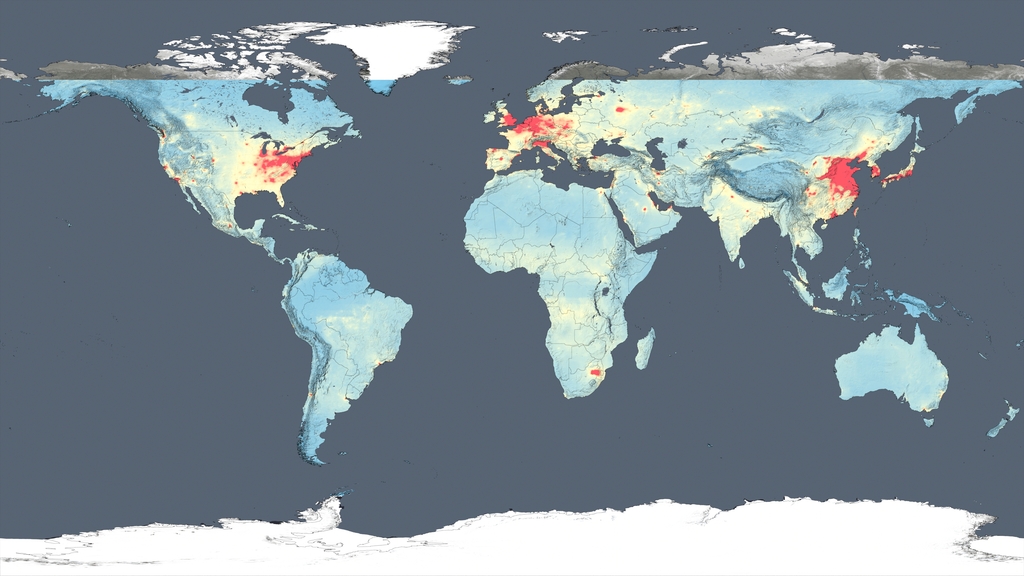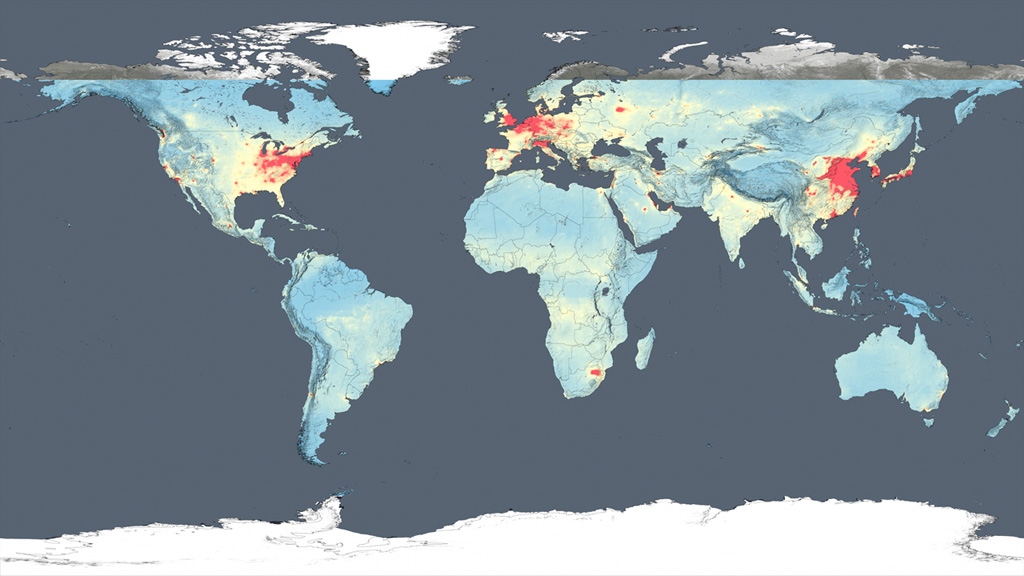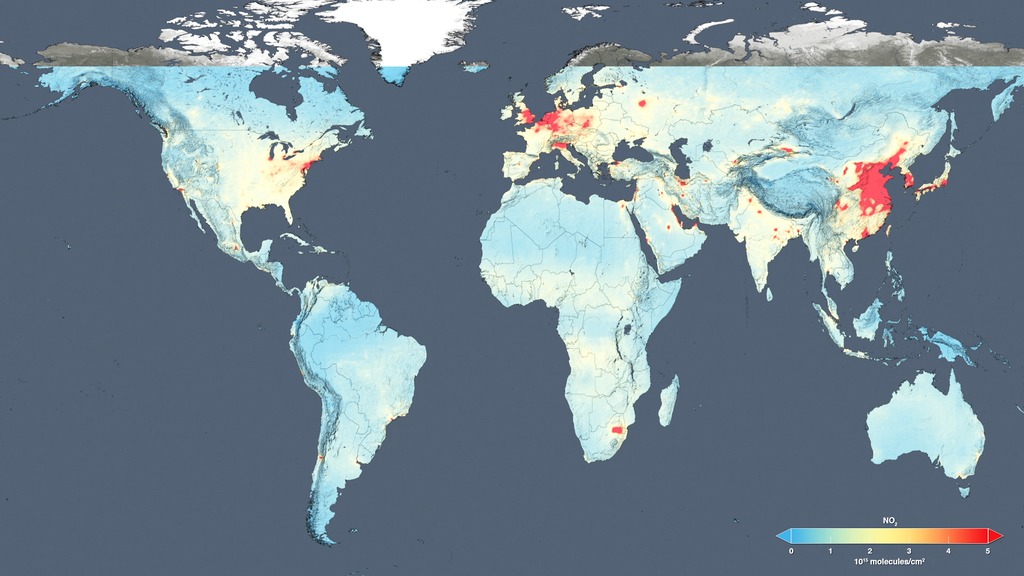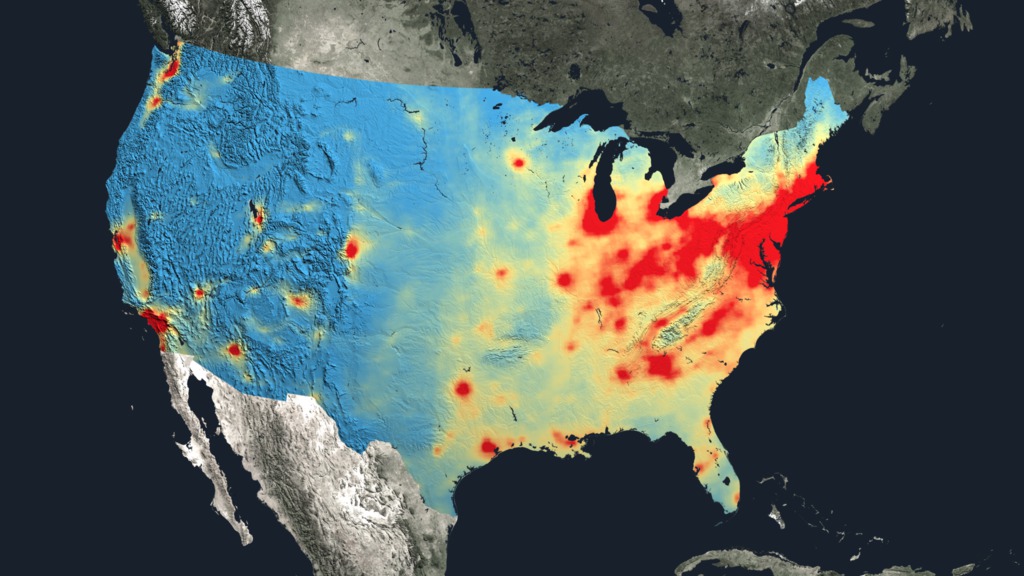US Air Quality
Anyone living in the U.S. for the past decade may have noticed a change in the air. The change is apparent in NASA satellite images that demonstrate the country's reduction of air pollution, or more specifically, nitrogen dioxide.
Nitrogen dioxide can impact the respiratory system, and it also contributes to the formation of other pollutants including ground-level ozone and particulates. The gas is produced primarily during the combustion of gasoline in vehicle engines and coal in power plants. Air pollution has decreased even though population and the number of cars on the roads have increased. The shift is the result of regulations, technology improvements and economic changes, scientists say.
This visualization shows tropospheric column concentrations of nitrogen dioxide as detected by the Ozone Monitoring Instrument on NASA's Aura satellite, averaged yearly from 2005-2011. Blue and green denote lower concentrations and orange and red areas denote higher concentrations, ranging from 1e+15 to 5e+15 molecules per square centimeter, respectively.
Nitrogen dioxide levels for the continental United States.
Nitrogen dioxide levels over Northeast United States.
Nitrogen dioxide levels over the northeastern corridor.
Nitrogen dioxide levels over Ohio and the surrounding states.

Nitrogen dioxide color bar
For More Information
See NASA.gov
Credits
Please give credit for this item to:
NASA's Scientific Visualization Studio
-
Animator
- Trent L. Schindler (USRA)
-
Producer
- Kayvon Sharghi (USRA)
-
Scientists
- Bryan Duncan (NASA/GSFC)
- Lok Lamsal (USRA)
- Yasuko Yoshida (SSAI)
-
Writer
- Kathryn Hansen (SSAI)
-
Project support
- Laurence Schuler (ADNET Systems, Inc.)
- Ian Jones (ADNET Systems, Inc.)
Datasets used
-
[Aura: OMI]
ID: 147
Note: While we identify the data sets used on this page, we do not store any further details, nor the data sets themselves on our site.
Release date
This page was originally published on Monday, June 23, 2014.
This page was last updated on Wednesday, May 3, 2023 at 1:50 PM EDT.




